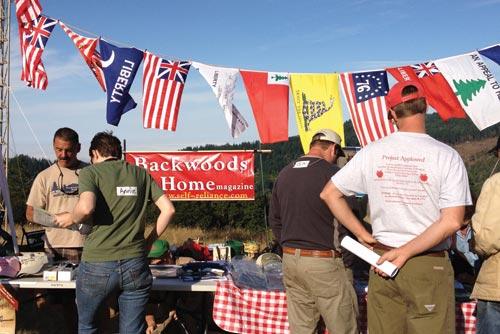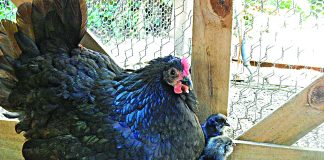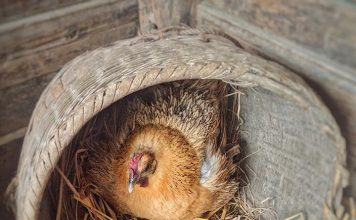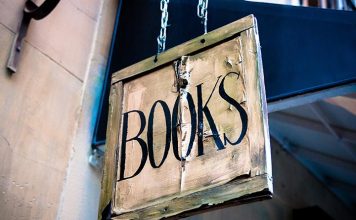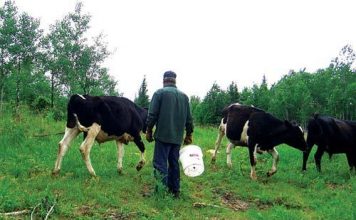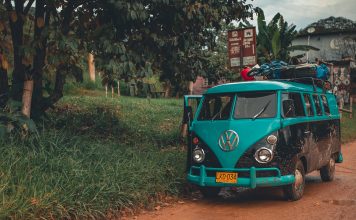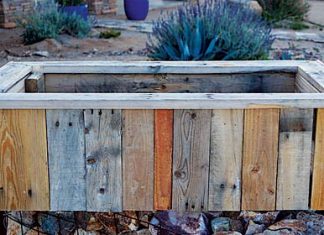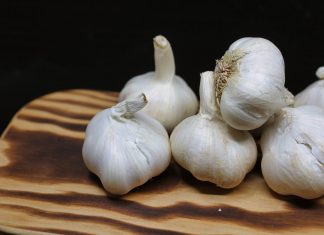 |
|
| Issue #139 • January/February, 2013 |
Long a supporter of the Appleseed concept, Backwoods Home Magazine hosted one in Gold Beach, Oregon, in second quarter 2012. Naturally, a good time was had by all. I had the good fortune to be in attendance. Let me tell you how it went, ’cause it’s happening again next year, and ya wanna know what to expect if you come.

Yes, there was some pageantry involved.
Prelude
I came to the event by rental car via Portland, Oregon, and it was a spectacular drive. You can see why the Gold Beach area is such a draw for those who swelter in summer heat in Portland, as they did when we went through. The run along the Pacific will find you pulling over frequently to take pictures.
At the foot of the steep cliffs, great black islands of rock rise like ragged monoliths from the Pacific. If you can, budget time to do the tourist thing in Gold Beach. The harbor area reminded me of the Boston wharves of my youth. It was a trip down memory lane to watch boats of all sizes scooting out of the fog banks to shore as bad weather threatened.
After all these years of writing for the magazine and submitting manuscripts from three thousand miles away on the opposite coast, it was a pleasure to tour the magazine’s home office and meet all the staff. Previously, I had only gotten to know Dave Duffy and John Silveira face to face. The entire Backwoods Home team was friendly and welcoming, not only to us but to readers and Appleseed shooters who had also arrived early.
The place is the epitome of everything a family-run small business should be. Laughter in the workplace. People who genuinely enjoy what they’re doing, and care about the people they’re doing it for. Go to the website and click on the video of “Clara’s Office Tour.” That’s pretty much the tenor of the place.
While you’re there visit the Rogue Outdoor Store. It’s a gun shop with old and new alike, nestled within a sporting goods and fishing/camping supply operation that makes you feel as if you’ve gone back to what such places must have been like in the 1940s. The owner and his well-trained crew make you welcome, and they know their stuff. A little wandering will find you at Gold Beach Books, one of the best bookstores this side of the famous Powell’s in Portland. (Bring a bib, so you don’t drool on all the rare collectors’ editions.) Walk the waterfront amidst the gulls and the pelicans. Visit Fely’s Cafe on the Brookings waterfront, a tiny, family-run diner attached to the laundromat there, where they cook your burgers to order. It takes you on a little trip back in time. Speaking of which, you want to visit the ’50s diner, Happy Days Malt Shop, with the great old car collection on premises. (“What do you mean, antiques? I used to drive one of those…and one of those, dammit!”) And for some gourmet drop-dead delicious seafood, you can visit Spinner’s Seafood, Steak & Chop House, run by Dave Duffy’s golf-playing pal, Dewey Powers. The folks at Backwoods Home will be happy to show you where they all are.

Be sighted in before you go. Here Mas and Dave Duffy do a pre-event sight-in with the Duffy family’s Ruger .22s.
Behind the scenes
Preparation had begun long before the first Backwoods Home Appleseed. Ted Fitzgerald had graciously donated the use of his range in Brookings, a short distance from Gold Beach. It was literally up in the clouds with a breathtaking view when there was time to take a break from one’s sight picture. Only those of us who’ve set up shooting matches know how much work goes into them. The Duffy family now knows and appreciates that.

Annie Tuttle with one of her first runs on Appleseed’s signature Redcoat targets.
The whimsically self-named Revolutionary War Veterans’ Association (RWVA), the group which sponsors Appleseed, had rounded up roughly a dozen volunteers to make the event run smoothly and productively. They were led by Carol Wylie, the “shoot boss,” and her husband Philip, stalwart Appleseeders and gun owners’ civil rights activists, who had flown all the way from their home in Illinois.
There was pasture grass to be mowed and target lines to be set up in front of the towering natural berm, or bullet backstop. There were tables to be set up and Porta-Potties to be placed. There were distances to be measured and parking to be arranged. It all went according to plan, with much of the BHM crew volunteering to do the work. For the Wylies and the Appleseed volunteers, this wasn’t their first rodeo.
The range is pastureland when folks aren’t shooting there. Cow pies were cleared off the firing line itself, but not entirely from the space between there and the target line, and there was the small matter of going forward to retrieve targets for scoring and replacement. No one, not even the city folks, were heard to complain without laughing about their own complaint. I figure it was part of the charm of the place. The host entity was, after all, Backwoods Home Magazine. I don’t think anyone was expecting to go prone on Astroturf…
The ride to the range was sometimes dizzying. There were narrow mountain roads, a bit washed out here and there by a recent storm, with no guard rails or road shoulders. The weather was as close to perfect as could be imagined. The closest we came to rain in two days was more like mist, and it was never cold enough to need more than a sweater. Most of the time, there was a gentle breeze to blow the gunsmoke away.
It was a perfect venue for a big bunch of folks who love guns, and love their country even more, to get together and shoot.

Philip Wylie, aided by Appleseed staffer using rifle stock as prop, shows the attendees the recommended prone position.
The shoot
Appleseed is set up so attendees can shoot either day, or both; most people preferred both days. There were a few who could only make Saturday, and a very few who could only make Sunday, but some 67 shooters spent the entire weekend on the range.
There were male and female and there were old and young. The oldest shooter I personally met was 77, and there were several kids whose ages could be expressed in a single digit. There were multiple people with physical handicaps. Fortunately, Appleseed understands how that goes and makes provisions. The event can be shot from a wheelchair. If it’s possible for you to get into (and out of) belly-down prone, but a neck injury keeps you from raising your head enough to aim from there, you can substitute the sitting position instead. Some shooters have been allowed to use bipods and shooting rests due to physical challenges.

The watchful instructor is there to ensure safety, and also fine-tune shooters’ techniques.
The guns of Appleseed
Though the core of the apple’s seed, in this case, is the military-style rifle which is what the original Patriots brought to the battlefield, after all Appleseed allows the .22 rimfire. This is a good thing in this time of inflation, tight money, and skyrocketing ammo costs. At other Appleseeds I’ve attended, there have been a sprinkling of 5.56mm rifles, and thirty-calibers. At the Backwoods Home Appleseed, I saw but one centerfire rifle: an HK91 or clone thereof, in 7.62mm NATO. Its user did pretty darn good with it, too.
The Appleseed uses a course of fire they call AQT, which stands for Army Qualification Test. All shooting is timed. The time constraints are not flat-out rapid combat fire in pace, but the operative term in “time constraints” is still constraints. All the shooters on the line but one at this particular event shot semiautomatic rifles. Their fingers never needed to leave the triggers once the shooting started, except to reload of course, or when their string of fire was done.

Carol congratulates a shooter on winning a Rifleman patch.
The exception was one young lad who caught my attention by shooting a mid-Twentieth century Mossberg bolt action .22 target rifle. The kid ran that bolt deftly, and he shot very well. Appleseed legend has it that the single highest score ever recorded on the AQT was posted by a septuagenarian who had been shooting NRA smallbore rifle matches since he was a kid. They say he accomplished the feat with an iron-sighted bolt action .22 rifle. I’m guessing the great old Winchester Model 52 target rifle, but of course, that’s only a guess…
As is typical of Appleseed matches, the single most popular rifle on the line was the Ruger 10/22. There is a reason Ruger has sold millions of these rifles…yes, “millions” in the plural. They work, and they’re accurate enough to get the job done. The 10/22 is the basic component of Appleseed’s LTR (Liberty Training Rifle), when equipped with a precision-adjustable aperture sight system and marksman’s loop sling. However, most of the shooters who make their way to the coveted Rifleman’s Patch (more on that momentarily) do so with telescopic sights on their 10/22s.
Marlin autoloaders were a strong second in popularity. You want the ones with quick-change box magazines like those of the 10/22, which are much faster for timed reloads than tubular magazines. There was also the occasional Remington on the line, and even an old post-WWII Savage/Stevens with tube magazine.
I saw several AR15 clones in .22 Long Rifle. The single most popular was the Smith & Wesson M&P (Military & Police). I furnished one of these to my sweetie’s grandson to use at the last Appleseed I attended before this one, when we were getting him a head start on USMC basic training. (The kid did great in both venues, by the way.) A Smith & Wesson M&P 15/.22 was also the choice of the top scoring rifle shooter at the Backwoods Home Appleseed, who posted an awesome 244 out of 250 possible points on the AQT. He had bought the rifle a week or so before the shoot.

With a stiff neck, Dave is allowed to shoot from sitting while Annie Tuttle, left, and the rest are firing from the required prone.
Setting your sights on Appleseed
A huge percentage of our nation’s warfighters now have optical sights on their M4s and M16s, and the same is true of the patrol rifles now resting in the police cars that protect our communities on the home front. It should be no surprise that optical sights ruled at the Backwoods Home Appleseed, too.
The tie-breaking “center-V ring” on the targets 25 paces away, centered in silhouettes scaled to represent enemy soldiers at distances up to hundreds of yards away, are small marks. The “V” in the “big one” that you’ll shoot from offhand (standing) is about the size of a bottlecap. The smallest, replicating the longest range, is the diameter of a #2 lead pencil. You need precise aim to do your best. The magnification of a telescopic sight helps to achieve that precise aim.
In precision marksmanship which is definitely what Appleseed is about the magnification of a powerful scope is a huge help. If you are grouping a bit off-center, you can see it through the high-magnification telescopic sight; many people can’t see .22 caliber bullet holes that far away with the naked eye. You’ll only see it when you go forward to retrieve the target and find that your hits are “off the mark” … and that’s way too late to be doing anything about it.
There is a reason so many hunters use scopes. There is a reason why, in the National Patrol Rifle Championships, so many of the winning cops have sights that magnify what they are aiming at. There is a reason the telescopic sight is the signature feature of a sniper rifle, and of course, these are all the same reasons why I would respectfully recommend that you “scope” your rifle if you want to do your best at Appleseed. The member of the Duffy family who outshot all of his many relatives at this match knows what I’m talking about: Robby Duffy shot his high-of-the-family score and won his Rifleman’s Patch shooting a .22 that had a telescopic sight on top of it.

On the firing line. There were plenty of safety officers to keep an eye on everyone despite the rolling pastureland.
A time to shoot, a time to talk
History lectures are a signature feature of an Appleseed event, which are scattered through the two days. The purpose is to remind the attendees of the patriotism which created this country, and which led to the Right to Keep and Bear Arms being placed second among the freedoms guaranteed in the Bill of Rights.
What has most impressed me in the Appleseeds I’ve attended is how this is handled. The staff instructors lecture on the lessons learned in the American Revolution, and do so from the perspective of the individual Americans who fought in that conflict. Not just the political macrocosm, and not even just from the perspective of those who were the designated combatants under the aegis of the Continental Army. Some of the female lecturers will put on a bonnet correct to a woman of the time, when they act out the role of the Colonial housewife who captured several Redcoats at gunpoint. I watched an Appleseed veteran don the tri-cornered hat of a militiaman and act out the part of a private citizen called to battle against professional soldiers, and who alongside his brothers prevailed against armed oppressors from a foreign shore. At that moment, the pasture high in the Oregon hills seemed to become the hedges and fields where the Americans fought against the might of the most powerful army Europe could send forth and won.
Another cornerstone of the Appleseed experience is reminding those attending just how personal warfare is, reminding them that it’s about the butcher’s bill for freedom. The toll of personal heartbreak and the tax on personal courage that every international conflict entails. How individual liberty and individual sacrifice entwine for the greater good of a free society. These people get the point across better than most history teachers, because they’re communicating it for the love of all it stands for.

The Clean Dozen: the volunteers from Appleseed who made it all work
Bottom line
The Backwoods Home Appleseed was, in the end, hugely successful. Some nine attendees earned the Expert-level ranking that won them the coveted Rifleman’s Patch. Two of them did so from wheelchairs. Many more fought hard to do so, and whether or not they made it, it improved their marksmanship skills and kindled a fire in their bellies to win that Patch the next time.
The match ran smoothly. In the time of the Founders; women sewed the flags, carried ammunition, ministered to the wounded, and gathered information from behind enemy lines. In today’s thankfully more enlightened times, women were “on the line” with the men, shooting. Carol Wylie, I thought, did an excellent job as “shoot boss,” the exemplification of Scarlett O’Hara in Gone With the Wind that is, “Steel under velvet.” Well done, Carol!
The day after the match, when I drove wistfully away from Gold Beach, I was glad I had come. I had seen both of the Backwoods Home families in action: the staff that runs the place, and the family who created it. A bunch of the Duffys were on the line, two generations’ worth, showing the same perseverance and diligence which made the magazine all that it is today.
It was a wonderful experience. It will be next time, too. I hope you can make it there!
(If you missed BHM’s 2012 Appleseed, don’t despair we’re planning another one this summer. We’ll publish the details soon.)


